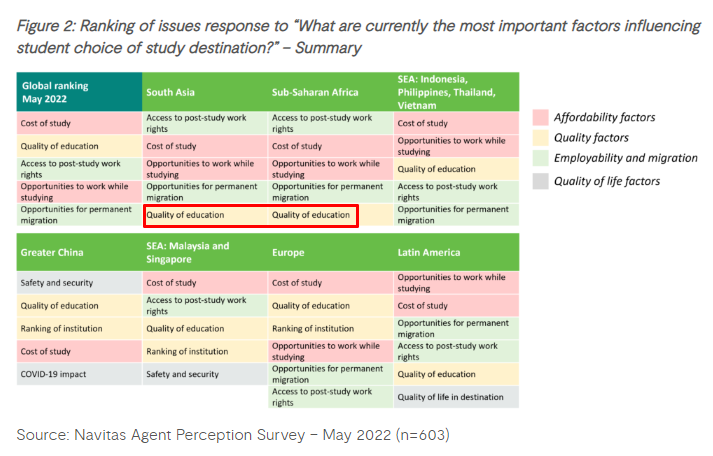Late last year, the former Morrison Government implemented a range of reforms aimed at driving a “rapid return of international students”. In particular:
- The number of hours that international students were allowed to work while studying were uncapped (previously students were only permitted to work 20 hours a week);
- Vocational Education and Training (VET) sector graduates would now receive a two year Temporary Graduate visa.
At the time, I noted that these visa changes would “inevitably lead to thousands of poor students from developing nations (e.g. the Indian sub-continent) undertaking cheap mickey mouse courses in order to work and gain permanent residency”.
Alas, that is precisely what has happened, with the Australia Asia Forum reporting a 500% increase in student visa applications from India:
Australia’s largest student recruitment marketplace, Global Study Partners (GSP), is betting big on India…
Between February and August 2022, GSP recorded an increase of 500 per cent in applications for Australian institutions…
Over the next two years, the Sydney-based company plans to double on-the-ground staff in India, building capacity to target more students across the vast country.
The latest survey from education company Navitas showed that work rights and residency are the top concerns of South Asian students, whereas quality of education is ranked last:

Students from South Asia and Sub-Saharan Africa care about work rights, not quality of education.
Indian newspaper Mathrubhumi also explained how work rights and immigration are the primary objective of Indian students, not gaining an education:
Most of the young people who go abroad want to spend their future life in those countries. For most young people, studying abroad is just a way to immigrate to those countries…
Young people going abroad from here do not make decisions based on the world ranking of the institution they are going to study.
More and more young people go to countries where they can get a student visa as soon as possible and get citizenship or permanent residence visa after studies. This becomes clear if a study is done based on the courses chosen by the youth, institutions as well as countries. Only a very small number of young people go for higher studies after studying the courses and institutes very seriously.
Clearly, the Morrison Government’s visa changes have turbo charged applications from non-genuine Indian students seeking to use the student visa system as a backdoor work visa before transitioning to permanent residency.
It also explains why the education-migration industry is lobbying hard to further expand work rights and permanent residency for international students, knowing full well that it will lead to an avalanche of visa applications from poorer nations.
All of which proves, yet again, that ‘international education’ is really a people-importing immigration industry rather than a genuine education export industry.
If work rights and permanent residency were scaled back, the whole ‘international education’ industry would collapse.

